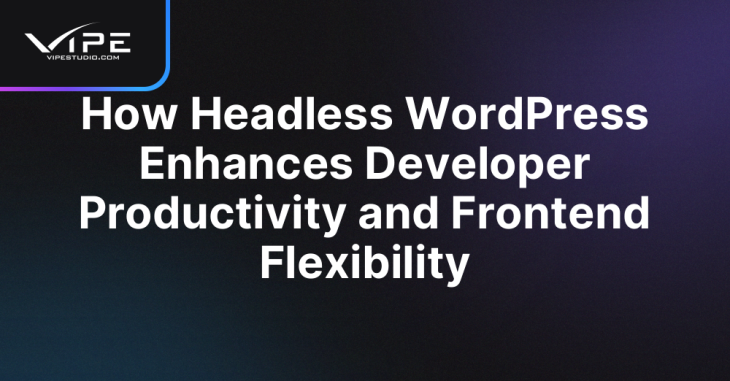How Headless WordPress Enhances Developer Productivity and Frontend Flexibility

READING TIME: MIN
In the evolving world of enterprise web development, agility and flexibility are critical. Traditional CMS architectures, while effective for many use cases, can limit frontend innovation and development speed. This is where Headless WordPress comes in—offering a powerful way to decouple content management from presentation and empower developers to build faster, more flexible frontends using modern tools.
Understanding the Concept of Headless WordPress for Enterprises
Headless WordPress refers to using WordPress solely as a content backend—handling data, users, permissions, and content creation—while the frontend is managed by a separate JavaScript-based framework like React, Vue, or Next.js. This decoupling allows developers to break free from the constraints of WordPress theming and templating systems.
By exposing content via the REST API or GraphQL, enterprises can deliver it to any frontend—web apps, mobile apps, kiosks, or IoT devices—making Headless WordPress a future-proof, omnichannel-ready solution.

Boosting Developer Efficiency with Modern Frontend Stacks
Frontend teams often prefer tools like React or Next.js because of their component-based architecture, hot reloading, and strong developer ecosystems. Headless WordPress enables the use of these tools without compromising on content management. This not only increases developer productivity but also allows for easier testing, faster iterations, and better collaboration between design and development teams.
- Use component libraries for UI consistency and reusability
- Enable rapid prototyping with static and server-rendered pages
- Take advantage of JavaScript build tools and CI/CD pipelines
Flexible Content Delivery Across Multiple Channels
One of the biggest advantages of Headless WordPress is that it allows enterprises to deliver the same content across various channels—websites, mobile apps, smart displays, and more—without duplicating effort.
Content editors can continue using the familiar WordPress dashboard, while developers are free to build any type of frontend experience. This division of responsibilities leads to smoother workflows and increased agility in digital strategy execution.

Improved Performance and Security through Decoupling
Decoupling also enhances performance and security. By serving the frontend separately—often from a static site host or edge network—load times are faster, and the attack surface is significantly reduced. This makes it easier to comply with enterprise security protocols and global performance expectations.
When combined with static site generation (SSG) or server-side rendering (SSR), Headless WordPress can deliver blazing-fast user experiences without compromising dynamic functionality.
When to Consider Headless WordPress for Your Organization
Headless WordPress is especially beneficial when your organization requires:

- High levels of frontend customization
- Omnichannel content delivery (e.g., website + mobile app)
- Faster performance and reduced server loads
- Seamless integration with third-party APIs and services
It’s also a smart move when your development team is already proficient in JavaScript frameworks and needs to scale features quickly without being restricted by traditional WordPress templating limitations.
Expert Support for Headless WordPress Implementations
Transitioning to Headless WordPress requires planning, especially around content modeling, API performance, and deployment workflows. At Vipe Studio, we specialize in enterprise WordPress architecture and Headless development strategies tailored to your needs.
If you’re ready to modernize your frontend while maintaining WordPress as your content engine, reach out to our team for a custom implementation plan.


